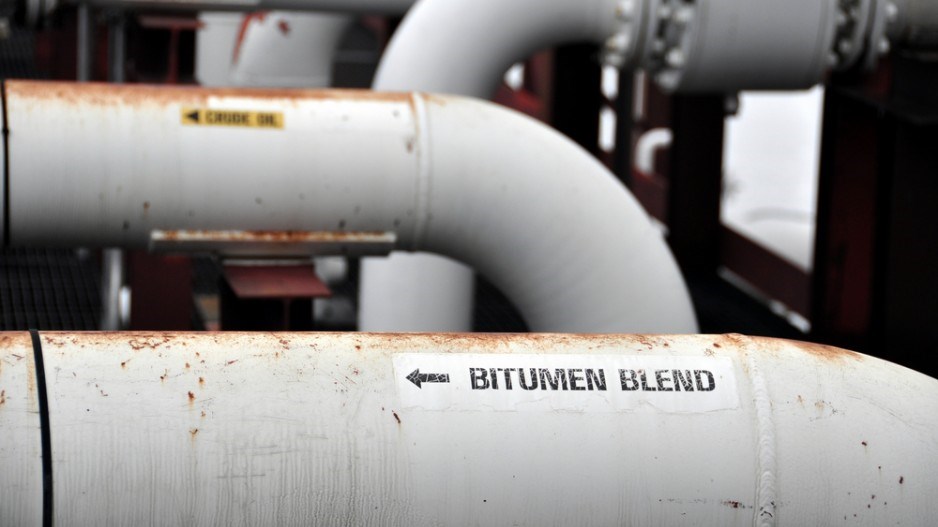Early-day bitumen miners at Fort Hills – the site of an oil sands project currently owned in part by Vancouver-based Teck Resources (TSX:TCK) – producing about 250 barrels of oil per day in the 1930s and 1940s, were onto something, says Suncor Energy Inc. (TSX:SU).
"The old bitumen site that was the forerunner to the modern oil sands business is actually located on the Fort Hills leases," said Steve Reynish, Suncor's executive vice-president, oil sands ventures.
"The old miners, of course, knew what they were talking about and knew the value of those Fort Hills leases."
The newly sanctioned Fort Hills oil sands mine, 90 kilometres north of Fort McMurray, is estimated to contain contingent resources of about 3.3 billion barrels of bitumen (1.3 billion barrels net to Suncor). The mine life is expected to be in excess of 50 years.
While the resource is important, the partners – Suncor (an operator with a 40.8% interest), Total E&P Canada (39.2% interest) and Teck (20% interest) – have to get the process and technology right, Reynish said.
The front end of the process – the crushing, extraction and the conveying – is the standard method of oil sands mining while the back end – solvent extraction – is new technology to Suncor but is well known in the region, he said.
The partners plan to use paraffinic solvent and will partially upgrade the bitumen before shipping it.
The mine's layout will use a multi-train configuration: two production trains at the front end, crushing and extraction, and three trains in the secondary extraction part of the process. This will enable taking parts of the plant offline for maintenance when required, said Reynish.
Much of the project's technology and configuration are based on Suncor's decades of operating the Millennium and North Steepbank oilsands mines, he said.
Some of the new mine will integrate with parts of Suncor's existing operations, he said, citing as an example its new east tank farm where Fort Hills' hot bitumen will be sent. The tank farm is a storage blending facility that began operations this summer.
Other synergies include Suncor's existing upgrader, pipeline connections and downstream refining. "Fort Hills will plug right into [them]," said Reynish.
Some people have said the project's operating cost estimates of $20 to $24 per barrel are "fairly aggressive" but those numbers are based on a lot of understanding, knowledge and deliberate design work and some upfront investment, he said.
Several mine features are being designed to cut costs, he said, noting the project will have very short haul routes, it will use Suncor's TRO tailings technology and tailings will be located close to operations.
In addition, the multi-train design will enable 80 to 90% utilization, it won't have an upgrader and it's a brand-new design, said Reynish.
"Because of this new TRO technology we will only have one fluid tailings pond; the rest of it will be this dry tailings technology," he said. "That has a dramatic effect on our sustaining capital and generally we'll be using less water than historically at other projects."
The partners estimate production of first oil in the fourth quarter of 2017 and ramp-up to full production of 180,000 barrels per day in the subsequent 12-18 months.
Mike MacSween, executive vice-president of major projects, said Suncor will employ the same cost-controlling execution strategies it has used in recent years on projects worth more than $20 billion. Those projects came in at or below projected costs, on schedule or earlier.
Recent successes include Suncor's extraction 300 plant, the TRO tailings technology, the North Steepbank expansion, Firebag 4, the east tank farm and a gasoline-benzene project in Denver, said MacSween.
Cost cutting strategies include using the same teams for successive projects, minimizing the workforce at the site, staggered execution, modularization, replicating designs, offsite fabrication and tapping into the global supply chain.
Roughly 75% of the contracts the partners have entered into for Fort Hills' construction have been either fixed price or have had alignment of interest, said MacSween.
There are currently about 1,000 people working on the site. No more than 5,500 people are expected to be there at peak.
When asked about expectations for Syncrude Canada Ltd.'s reliability improving, Steve Williams, president and chief executive officer, said all the joint venture's owners have been dissatisfied with the project's rate of progress in reliability and performance for the past few years.
Williams said Suncor is working closely with Exxon Mobil Corporation, Syncrude's manager, to pool oilsands knowledge and he is encouraged that they are working on all the right issues so that asset performance will improve.
"Of course what the partners have said is, until that happens, we'll not grow that asset and I think as we start to operate it well, then the opportunities for further development may start to appear," said Williams.




